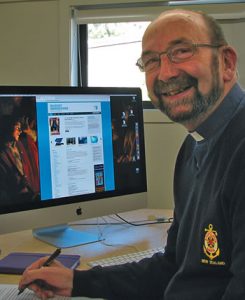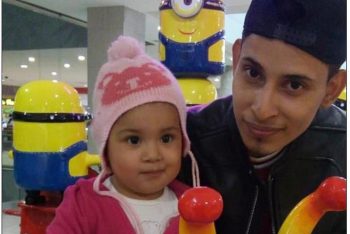Refugeees and Migrants
In late June, the Vatican released a statement saying that Pope Francis was deeply upset by the photo of a father and daughter from El Salvador, Oscar Alberto Martínez Ramírez and his nearly 2-year-old daughter Valeria, who drowned while attempting to cross the Rio Grande to reach Brownsville, Texas: “The pope is profoundly saddened by their deaths, and is praying for them and for all migrants who have lost their lives while seeking to flee war and misery”.
Pope Francis clearly feels for and cares about migrants and refugees. Again and again, he makes statements and takes action to show that he is pro-immigrant. John L. Allen Jr points out that he does so because “any classroom teacher will tell you that repetition is the key to effective communication - if you want people to absorb something, you have to keep saying it or doing it, over and over again, until it becomes muscle memory”. 1
Not long after he became Pope in 2013, Francis visited Lampedusa, where many refugees from North Africa try to enter Europe. He laid a wreath in the sea in memory of those who drowned trying to find safety in Europe; he visited a detention centre to talk with the detainees.
In 2016, he travelled to Greece, to the island of Lesbos, which is another arrival point for migrants from Africa, and brought 12 refugees from Syria back to Rome with him. Also in 2016, when he visited Mexico, he went to the US border and mourned for those who had died in the deserts or had drowned in the Rio Grande, as they tried to find a better life for themselves and their families.
The Pope’s message for World Migrant and Refugee Day on 29 September, abridged on pages 6 and 7, is well worth reading in full, and can be found at www.vaticannews.va
The statistics relating to refugees and migrants are staggering. UNHCR, the Office of the United Nations High Commissioner for Refugees, also known as the UN Refugee Agency, estimates that there are 70.8 million “forcibly displaced people” at present. There are 25.9 million refugees, of whom half are under 18 years of age; 3.5 million asylum-seekers; UNHCR has information about 3.9 million stateless people, and it is thought that there are millions more; as a result of war and persecution, 37,000 people flee their homes each day – 26 people every minute.
The situations in which many of those forced to flee their homelands find themselves are often horrendous and heart breaking.
For example, in Lebanon, Syrian refugees have been ordered to dismantle their homes, leaving 5,000 families and about 15,000 children homeless again, “forced to re-live the traumatic experience of sleeping outside or in overcrowded tents”. 2
And in Australia, dozens of refugees brought from Nauru and Manus Island for medical treatment find themselves in hotels, “some in rooms crawling with bed bugs”. They are constantly under guard and cannot leave the building without a guard on either side of them, holding them tightly by their upper arms. 3
Things are no better in migrant detention centres in the USA. In the Rio Grande area, “adults were packed in standing room only cells for a week, with others held in overcrowded cells for over a month”. 4
There are, of course, good news stories. A recent one was about a young man, Abbas Nazari, who had won a Fulbright scholarship for postgraduate studies in the USA. In 2001, when he was 7 years old, he was one of 433 people rescued by the Norwegian cargo ship Tampa. Refugees from the Tampa who found a home in New Zealand “are now small business owners, home owners, doctors, nurses, public servants, students and keen rugby players”, he wrote. “Given the chance at a new life, we have grabbed it with both hands. I’m proud to call myself a Kiwi. I have been back to Afghanistan twice in the years since we arrived in New Zealand, and I have seen what life would have been like had my family stayed in war-torn Afghanistan”. 5
The number of forcibly displaced people in the world is more than fifteen and a half times the population of New Zealand. While we cannot look after everyone in need, we have a responsibility to do what we can – to provide security and peace for some of those who suffer most, and to do the very best we can for those who come to our country hoping to live in freedom and peace.
Imagine how terrible it must be for those on the other side of the borders of the USA or of Europe, or on Manus Island or Nauru, begging to be admitted.
The Vatican’s date for the World Day of Prayer for Refugees and Migrants is 29 September;
in NZ, the Day of Prayer was 23 June;
in Australia, 25 August;
in the USA, 20 June; in Ireland, 20 January.
1 Crux, 30 June 2019
2 Guardian Australia, 30 June 2019
3 ibid., 29 June 2019
4 BBC News website, 3 July 2019
5 The Spinoff, 11 November 2017


 Entries(RSS)
Entries(RSS)